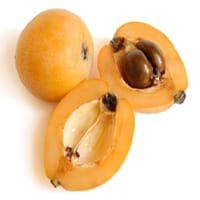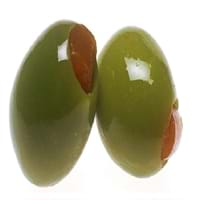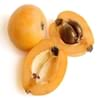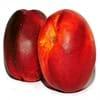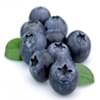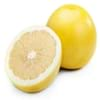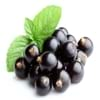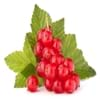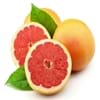Health Benefits
Cancer prevention, Heart care, Reduces nervous tension, Reduces blood circulation problems, Reduces stress, Regulation of heart rate, Strengthening of bones
Cancer prevention, Helps in cartilage regeneration, Prevents macular degeneration, Treatment of alzheimer's disease
General Benefits
Anti-inflammatory properties, Controls blood pressure, Digestive aid, Eye care, Helps in weight loss, Improves eye vision, Maintains healthy cholesterol level, Strengthens bones
Anti oxidant properties, Anti-inflammatory properties, Boosts immune system, Controls blood pressure, Digestive aid, Maintains healthy cholesterol level
Skin Benefits
Anti-aging benefits, Reduces wrinkles, Treatment of dark spots, Treatment of skin diseases
Hydrates skin, Skin rejuvenation, Treatment of skin diseases
Hair Benefits
Protects hair
Acts as moisturizer, Good conditioner, Regulates hair growth
Allergy Symptoms
Diarrhea, Itching of mouth, Nasal congestion, Sneezing, Swelling of face, Watery eyes
NA
Side Effects
Allergic reaction
Affects blood glucose levels, Dizziness, Stomach pain
Best Time to Eat
Along with meal, As a snack in the late afternoon, Don't consume at night and before bed, Morning time (before lunch)
Hardly eaten raw, Olive oil is consumed for many purposes.
Vitamin B5 (Pantothenic Acid)
Not Available
Vitamin C (Ascorbic Acid)
Not Available
Vitamin E (Tocopherole)
Not Available
Vitamin K (Phyllochinone)
Not Available
Lutein+Zeaxanthin
Not Available
Phytosterol
Not Available
Calories in Fresh Fruit with Peel
Calories in Fresh Fruit without Peel
Not Available
Not Available
Calories in Frozen Form
Not Available
Not Available
Calories in Dried Form
Not Available
Calories in Juice
Not Available
Calories in Jam
Not Available
Calories in Pie
Not Available
Type
Tree fruit, Tropical
Tree fruit
Season
Winter
Spring, Summer
Varieties
Ahdar, Ahmar, Asfar, Blush, Champagne, Early Red, Eulalia, Fire Ball, Golden Red, Golden Yellow, Oliver, Thales, Thames Pride, Victor and Wolfe
Manzanillo, Sevillano, Mission, Ascolano, Barouni, Gordal, Rubra and Picholine
Color
Orange, Yellow
Black, Green, Purple, Yellow
Inside Color
Orange
Brown
Origin
China
Eastern Mediterranean Region
Soil Type
Clay, Loam, Sand, Well-drained
Well-drained
Climatic Conditions
Warm to hot climate
Warm to hot climate
Facts about
- Loquats are used in plum wine manufacturing.
- Dried leaves of loquat are used to make herbal tea.
- The seeds of loquat are slightly toxic & the symptoms of intoxication are nausea, vomiting & shortness of breath.
- In ancient Greece, 1st eye shadow was made by adding olive oil in ground charcoal.
- The most expensive form of olive oil is Extra Virgin.
- Largest type of olive tree is known as donkey tree & smallest one is called bullet.
Other Countries
Brazil, Chile, China, Egypt, Israel, Italy, Morocco, Pakistan, Portugal, Spain, Turkey
Algeria, Egypt, Greece, Italy, Morocco, Portugal, Syria, Tunisia, Turkey
Top Importer
China
United States of America
Botanical Name
Eriobotrya japonica
Olea europaea
Synonym
Crataegus bibas or Mespilus japonica or Photinia japonica
Not Available
Subkingdom
Tracheobionta
Tracheobionta
Division
Magnoliophyta
Magnoliophyta
Class
Magnoliopsida
Magnoliopsida
Species
E. japonica
O. europaea
Difference Between Loquat and Olive
We might think that Loquat and Olive are similar with respect to nutritional value and health benefits. But the nutrient content of both fruits is different. Loquat and Olive Facts such as their taste, shape, color, and size are also distinct. The difference between Loquat and Olive is explained here.
The amount of calories in 100 gm of fresh Loquat and Olive with peel is 47.00 kcal and 115.00 kcal and the amount of calories without peel is Not Available and Not Available respectively. Thus, Loquat and Olive belong to and category.These fruits might or might not differ with respect to their scientific classification. The order of Loquat and Olive is Rosales and Lamiales respectively. Loquat belongs to Rosaceae family and Olive belongs to Oleaceae family. Loquat belongs to Eriobotrya genus of E. japonica species and Olive belongs to Olea genus of O. europaea species. Beings plants, both fruits belong to Plantae Kingdom.
